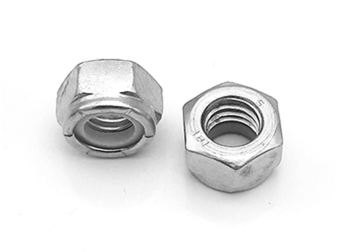Oct . 18, 2024 10:58 Back to list
Hex Nut Size Specifications and Measurements in Millimeters
Understanding Hex Nut Dimensions in Millimeters
Hex nuts are widely used fasteners in various industries, providing a secure way to connect different components. Their simple yet effective design allows for easy tightening and loosening, making them a staple in construction and machinery assembly. Understanding the dimensions of hex nuts, especially when measured in millimeters, is crucial for ensuring compatibility with other components and achieving optimal performance.
What is a Hex Nut?
A hex nut is a six-sided fastener designed to be used in conjunction with a bolt or screw. The primary purpose of a hex nut is to fasten two or more objects together, creating a strong mechanical connection. Hex nuts are available in various sizes and materials, making them versatile for many applications, from automotive to household repairs.
Dimensions of Hex Nuts
Hex nuts are defined by several key dimensions, each contributing to the effectiveness and usability of the nut. Here are the most critical dimensions to consider
1. Width Across Flats (WAF) This is the distance measured across opposite flats of the nut. It is typically measured in millimeters (mm) and is crucial for determining the size of wrench required for tightening or loosening the nut. For example, a hex nut with a width of 10 mm means you would need a 10 mm wrench for proper fitting.
2. Height (H) The height of the hex nut is the distance from the base to the top. This dimension can influence the fitting with other components, especially when space is limited. A standard hex nut has a height that is approximately 0.8 times its width across flats.
3. Thread Size (d) Hex nuts are threaded internally, and the size of these threads determines the compatibility with bolts. The thread size is typically expressed in terms of diameter (in mm) and pitch (the distance between threads). Common thread sizes for hex nuts include M4, M5, M6, and so on, with M indicating metric measurements.
4. Pitch This dimension refers to the distance between adjacent threads and is essential for ensuring that the nut will properly fit the corresponding bolt. Common pitches for hex nuts include 0.7 mm for M6 and 1.0 mm for M8.
hex nut dimensions in mm

5. Material Thickness The thickness of the material used in a hex nut can vary depending on the intended application. Thicker nuts offer greater strength, while thinner ones may be used in lighter applications.
6. Angle of the Flank The angle of the threads is another critical dimension that impacts the function of the fastener. Standard hex nuts usually have a flank angle of 60 degrees, which is essential for ensuring a tight connection.
Standards and Specifications
Hex nuts are manufactured according to several international standards that define their dimensions, strength, and quality. The most common standards for hex nuts include ISO (International Organization for Standardization) and DIN (Deutsches Institut für Normung), ensuring consistency and reliability across different manufacturers.
For example, an ISO 4032 hex nut is commonly used in industrial applications, characterized by its specific dimensions and performance requirements. Understanding these standards is essential for engineers and technicians when selecting the appropriate fasteners for a project.
Importance of Accurate Measurements
When working with hex nuts, it's crucial to take accurate measurements to ensure compatibility with bolts and overall assembly integrity. Misalignment caused by incorrect dimensions can lead to equipment failure, safety hazards, and increased costs due to repairs or replacements.
Using calipers or micrometers might be necessary to measure hex nut dimensions accurately. Additionally, sourcing from reputable manufacturers who adhere to international standards can help minimize discrepancies in dimensions.
Conclusion
In conclusion, a comprehensive understanding of hex nut dimensions in millimeters is vital for anyone involved in mechanical assembly or construction. By familiarizing oneself with key measurements such as width across flats, height, thread size, and pitch, individuals can ensure that their connections are secure and reliable. As industries continue to evolve, the importance of precision in fasteners like hex nuts will remain crucial for the successful assembly of components and equipment. Whether in automotive applications, construction, or manufacturing, getting the dimensions right can make a significant difference in functionality and safety.


